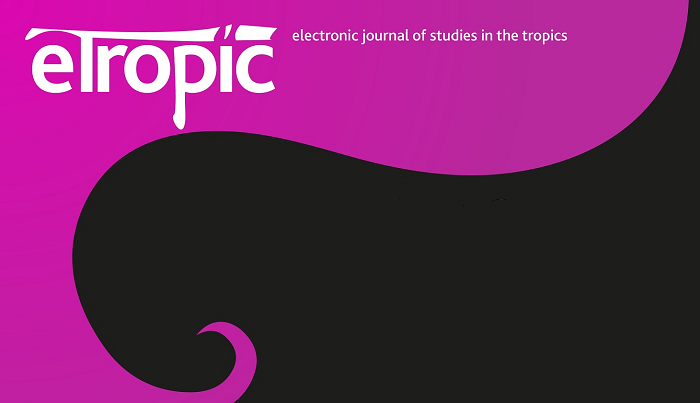Savagely Sentimental: The Creation and Destruction of the Sentimental Indian in Lydia Maria Child’s Hobomok
DOI:
https://doi.org/10.25120/etropic.16.2.2017.3622Keywords:
female writer, 'Noble Savage', Hobomok, sentimental maleAbstract
Lydia Maria Child, known during her time for controversial writing, has largely fallen out of focus in current feminist studies. As an activist, many of her pieces questioned the role of gender, race, and sexuality in the early nineteenth century. Hobomok, published in 1824, is considered one of her most radical tales. Detailing the marriage and procreation of a white woman and a Native American man, Hobomok shocked audiences with its content. Many critics have come to view Hobomok as a piece of feminine rebellion, seeing Mary Conant as an example of feminine refusal. Although such interpretations hold merit, they often ignore the role of Hobomok, the titular character. Hobomok is the first visible experimentation of the sentimental male. Other adaptations of the sentimental male do not appear in literature until Harriet Beech Stowe’s Uncle Tom’s Cabin. I argue that Child attempts to create one of the first sentimental males through Hobomok by compounding the qualities of masculinity and femininity of the era. Child is able to attempt such a task due to the pre-established concept of the “Noble Savage,” which already imbued Indians with sentimental attributes, and provides a valid and even rational justification for his extinction. Once establishing Hobomok as a “Noble Savage” and compounding masculine and feminine qualities within him, Child can easily and completely dismiss him so as to minimize his threat to white nineteenth century society. It is the compilation of his “noble savagery” and his feminine qualities that engenders his extermination.
Downloads
Published
How to Cite
Issue
Section
License
Authors who submit articles to this journal agree to the following terms:
1. Authors are responsible for ensuring that any material that has influenced the research or writing has been properly cited and credited both in the text and in the Reference List (Bibliography). Contributors are responsible for gaining copyright clearance on figures, photographs or lengthy quotes used in their manuscript that have been published elsewhere.
2. Authors retain copyright and grant the journal right of first publication with the work simultaneously licensed under a Creative Commons Attribution (CC-BY) License that allows others to share and adapt the work with an acknowledgement of the work's authorship and initial publication in this journal.
3. Authors are able to enter into separate, additional contractual arrangements for the non-exclusive distribution of the journal's published version of the work (e.g., post it to an institutional repository, or publish it in a book), with proper acknowledgement of the work's initial publication in this journal.
4. Authors are permitted and encouraged to post their work online (e.g., in institutional repositories or on their website) prior to and during the submission process, as it can lead to productive exchanges, as well as earlier and greater citation of published work (see The Effect of Open Access or The Open Access Citation Advantage). Where authors include such a work in an institutional repository or on their website (i.e., a copy of a work which has been published in eTropic, or a pre-print or post-print version of that work), we request that they include a statement that acknowledges the eTropic publication including the name of the journal, the volume number and a web-link to the journal item.
5. Authors should be aware that the Creative Commons Attribution (CC-BY) License permits readers to share (copy and redistribute the work in any medium or format) and adapt (remix, transform, and build upon the work) for any purpose, even commercially, provided they also give appropriate credit to the work, provide a link to the license, and indicate if changes were made. They may do these things in any reasonable manner, but not in any way that suggests you or your publisher endorses their use.
